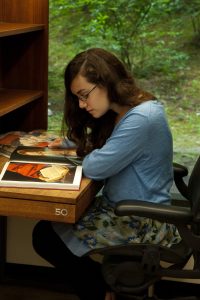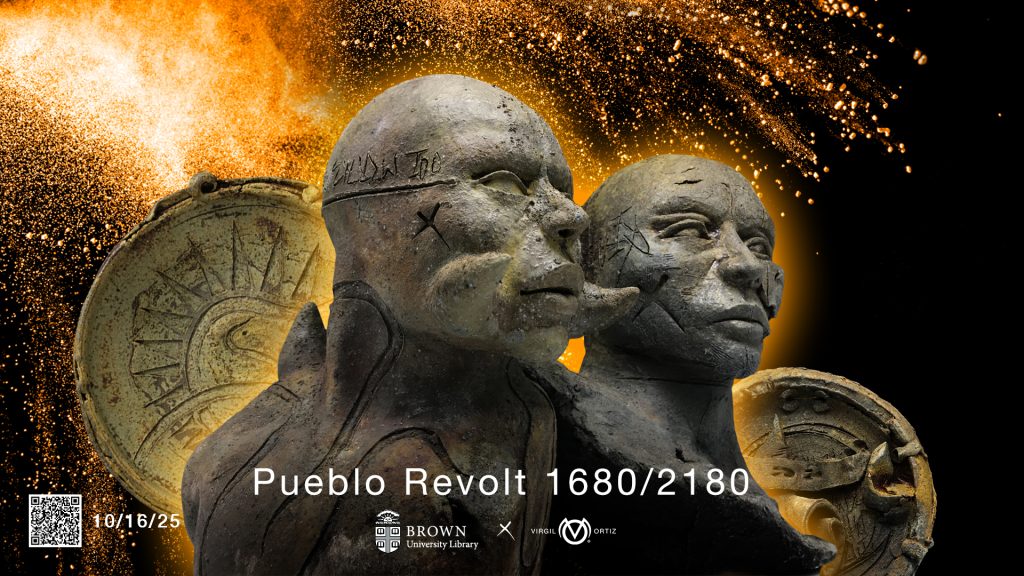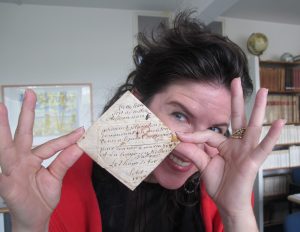E-Newsletter
Recent Posts
Latest News
-
Reserve Library Lockers and Carrels Online
|
Your Brown University Library now offers an online option for reserving lockers and carrels at the Rockefeller Library.
How do I reserve lockers and carrels online?

Student working at a carrel in the Rock Find all of the Rockefeller Library’s lockers and carrels in BruKnow, the online library catalog. They are organized by floor and location, making it easy to browse and find a space that works for you.
View available lockers and carrels, or search the terms “library locker” or “library carrel” in BruKnow.
Faculty, graduate students, and medical students: Select a record from the search results. Once you are in the record, click “request item” to place your request. A library staff member will then reach out via email to confirm your locker or carrel reservation.
Undergraduate thesis writers must visit the service desk at the Rock for a carrel application. The completed application must be signed by your thesis advisor and returned to the Rock service desk.
Who can reserve lockers and carrels?
Lockers: Faculty, graduate students, and medical students, and undergraduate students working on a senior thesis and may reserve lockers. You must have a carrel to reserve a locker.
Carrels: Brown graduate students and faculty members, and undergraduate students writing a senior thesis are eligible to receive a carrel.
What are library lockers and carrels?
Lockers are reservable spaces where you can securely store items that you don’t want to leave at your carrel.
Carrels are reservable study spaces that include a desk, shelving for library books, and power outlets.
Where are library lockers and carrels?
Rockefeller Library
There are lockers and carrels at the Rock.
Lockers are located on every level except for the main level. Graduate students also have access to lockers in the Wernig Graduate Student Reading Room.
Carrels are located on the perimeter of the stacks on every level except for the main level.
Orwig Music Library
Orwig Music Library also has carrels available for reservation. They are located in the Upper Reading Room and the Lower Reading Room. Orwig’s carrels can be reserved by Brown faculty members, graduate students writing a dissertation or thesis, and undergraduate students writing a thesis.
All applicants must visit the Orwig circulation desk to inquire about a carrel. Orwig’s carrels are not in BruKnow.
More Information
To learn more about library spaces and guidelines, visit Reserve Rooms, Lockers & Carrels. If you have any questions, please contact the Library at rock@brown.edu.
-
Virgil Ortiz: Pueblo Revolt 1680/2180
|

Join the Brown University Library, the Haffenreffer Museum of Anthropology, and the RISD Ceramics Department for an artist’s talk with Virgil Ortiz, the award-winning Pueblo artist whose work combines innovative pottery, art, décor, fashion, video, and film, on Thursday, October 16 at 6 p.m. at the John Hay Library (321).
Free and open to the public. In-person event.
Virgil Ortiz
Virgil Ortiz (born 1969) is a Pueblo artist, known for his pottery and fashion design from Cochiti Pueblo, New Mexico. Although Ortiz has projects in varying mediums, Ortiz is first and foremost a potter. Ortiz says, “Clay is the core of all my creations. My work centers on preserving traditional Cochiti culture and art forms. It’s important to recognize that Pueblo communities are very much alive and have a level of vitality that speaks to generations of strength, persistence, brilliance, and thriving energy.” Ortiz makes a variety of pottery, including traditional Cochiti figurative pottery, experimental figurative pottery, traditional pottery vessels.
Pueblo Revolt 1680/2180
In this artist’s talk, Ortiz keeps Cochiti pottery traditions alive but transforms them into a contemporary vision that embraces his Pueblo history and culture and merges it with apocalyptic themes, science fiction, and his own storytelling. Historic events like the 1680 Pueblo Revolt may not immediately spring to mind when you think of science fiction, but blending the two have occupied Ortiz for nearly two decades. The storyline transports the viewer back more than three hundred years to the historical events of the 1680 Pueblo Revolt and then hurtles forward through time to the year of 2180, introducing a cast of characters along the way. As Ortiz’s saga unfolds, history mingles with the future in a bold new chapter of resistance and revolution in his art and installations. Inspired by the 1680 Pueblo Revolt, the most successful uprising in history, Ortiz reimagines the rebellion through a futuristic lens where tradition and innovation collide.
Clay Revolution at RISD
This talk is the second of two joint events organized with RISD’s Ceramics Department. The first event, Clay Revolution, is a public lecture the day prior (Oct. 15) at RISD Museum, 2 to 3 p.m.
-
Unlocking History: Tunisian Letterlocking with Jana Dambrogio
|
Join the Brown University Library and the Center for Middle East Studies for a workshop and conversation with Jana Dambrogio, conservator, author, and editor, on Tuesday, October 21 at 4 p.m. at the John Hay Library (321).
Free and open to the public. In-person event.
Letterlocking

Reconstruction of original locked letter packet, dated 1817, discussed in talk Offering a glimpse into a new collaborative project on letterlocking from Ottoman Tunis in the early nineteenth century, this talk will reconstruct the intricate folds, tucks, and slits of letter packets secured shut with “letterlocking,” a practice that underpinned global communications security for centuries before modern envelopes.
The speaker Jana Dambrogio has pioneered the study of letterlocking using automated virtual unfolding of sealed documents imaged by X-ray microtomography and computational flattening algorithms. She has co-authored numerous studies on the subject with Daniel Starza Smith, including their latest book from MIT Press entitled, Letterlocking: The Hidden History of the Letter. Dambrogio situates her findings from this case study of Ottoman Tunisian correspondence within a novel letterlocking categorization system based on a study of 250,000 historical letters.
This event will delve into how the materiality of the paper lock itself acted as an antiforgery mechanism in the perilous waters of the Barbary Coast during the early period of diplomacy between the Ottoman regency of Tunis and the United States in the Mediterranean Sea. This session will be in conversation with Gwendolyn Collaço, Anne S.K. Brown Curator for Military & Society at the John Hay Library, who translated the 1817 letter from the Bey of Tunis to American President James Monroe (1817–1825) that Dambrogio analyzes in her work. In their dialogue, they will contextualize the unusual episode surrounding the dispatch of this letter, including American mercantile interests in the region, the response of the Bey of Tunis to violated ceremonial customs, and this dynamic period that transformed diplomatic correspondence between Tunis and its Mediterranean partners. This session features a hands-on demo of letterlocking techniques for audience members to try for themselves.

Jana Dambrogio Jana Dambrogio is the Thomas F. Peterson (1957) Conservator, Wunsch Conservation Laboratory, MIT Libraries. She is also the Director and Founder of Unlocking History Research Group, General Editor of Letterlocking.org and Dictionary of Letterlocking (DoLL).
This event forms part of CMES Research Initiative: American-Islamic Exchanges in the Long 19th Century.
